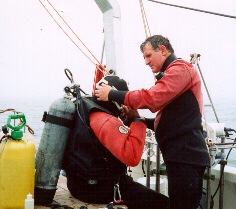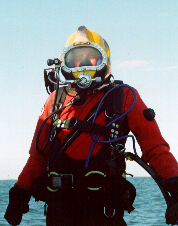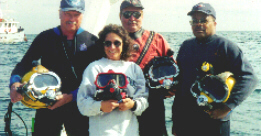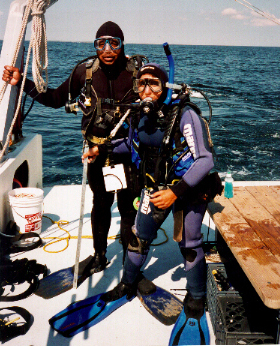
The Scientific Diving Program for Rutgers University’s Department of Marine and Coastal Sciences (DMCS) was established in 1990 to support scientific research and control diving activities conducted under the auspices of this institution. The Department of Marine and Coastal Sciences is an organizational member of the American Academy of Underwater Sciences (AAUS), an organization dedicated to the advancement of scientific diving through the promotion of comprehensive training and educational programs. The DMCS diving program permits the scientific research community to access the undersea environment either as a participating research diver or through the services of the core members of DMCS’s research dive team.
The diving program operates under the guidance of the Diving Control Broad which sets forththe regulations and standards for training and diving activities. All diving conducted under the auspices of DMCS is subject to the guidelines established by the Diving Control Board and described in the DMCS’s Scientific Diving Manual. The diving program is managed by the Scientific Diving Officer in accordance with the directives of the Diving Control Board. All candidates for the scientific diving program must demonstrate a proficiency in their knowledge of the scientific diving program’s guidelines, as well as, their knowledge and skills for diving in a safe and effective manner. Diving under the auspices of the IMCS is not permitted unless a candidate has met the qualifications as set forth by the Diving Control Board and received the approval of the Scientific Diving Officer.


This facility is situated near the Little Egg Harbor Inlet in southern New Jersey. The diving program currently has two research vessels available for its operations the R/V Caleta and the R/V Arabella. The R/V Caleta is a 9 m aluminum-hulled vessel capable of supporting SCUBA and portable surface supply systems. The R/V Arabella is the program’s primary diving platform. This vessel has a 4.8 m (16′) beam, an overall length of 14.3 m (48′), and is equipped to support SCUBA and surface supplied diving modes.
The major emphasis of the diving program has been to support and conduct undersea research activities at an inner continental shelf site located directly offshore of the Tuckerton Field Station. This site is situated in 15 m (50′) of water and has been designated as LEO-15. This LEO (Long-term Ecosystem Observatory) is the first facility to be established as part of an electro-optical ocean sensing network which will provide the scientific community with the ability to monitor natural and anthropogenic changes in the marine environment in situ and real time. Research components that the scientific program diving program members are involved with include: habitat characteristics and the relationship of habitat on the recruitment of marine organisms; effects of physical, environmental, and biological processes on fisheries; coastal processes, e.g. as monitoring the processes involved with upwelling events; and, the development and enhancement of reliable sampling and sensing tools.

